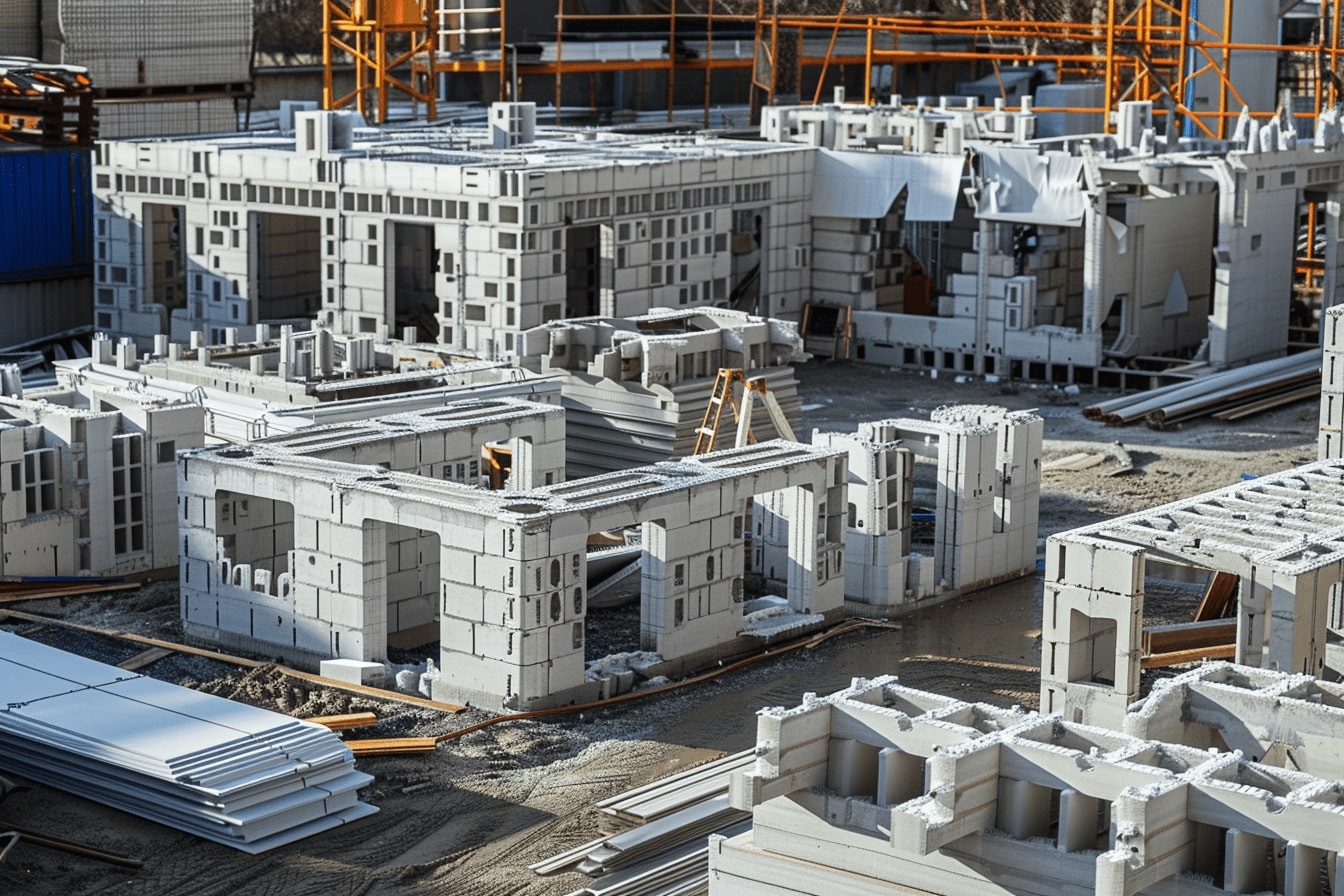- Home
- Articles
- Architectural Portfolio
- Architectral Presentation
- Inspirational Stories
- Architecture News
- Visualization
- BIM Industry
- Facade Design
- Parametric Design
- Career
- Landscape Architecture
- Construction
- Artificial Intelligence
- Sketching
- Design Softwares
- Diagrams
- Writing
- Architectural Tips
- Sustainability
- Courses
- Concept
- Technology
- History & Heritage
- Future of Architecture
- Guides & How-To
- Art & Culture
- Projects
- Interior Design
- Competitions
- Jobs
- Store
- Tools
- More
- Home
- Articles
- Architectural Portfolio
- Architectral Presentation
- Inspirational Stories
- Architecture News
- Visualization
- BIM Industry
- Facade Design
- Parametric Design
- Career
- Landscape Architecture
- Construction
- Artificial Intelligence
- Sketching
- Design Softwares
- Diagrams
- Writing
- Architectural Tips
- Sustainability
- Courses
- Concept
- Technology
- History & Heritage
- Future of Architecture
- Guides & How-To
- Art & Culture
- Projects
- Interior Design
- Competitions
- Jobs
- Store
- Tools
- More
Exploring 3D Printing in Architecture: How It’s Transforming Design and Construction
Discover how 3D printing is revolutionizing architecture by enhancing creativity, efficiency, and sustainability. From intricate designs to full-scale structures, explore its role in reducing waste, cutting costs, and enabling innovative possibilities. Learn about groundbreaking projects, benefits, challenges, and the promising future of this transformative technology in modern construction.

Architecture is constantly evolving, and 3D printing is one of the most exciting innovations reshaping the way we design and build. This groundbreaking technology is pushing the boundaries of creativity and efficiency, allowing us to turn complex designs into reality faster than ever before. It’s not just about creating models anymore—3D printing is transforming entire structures.
As architects and designers, we’re always searching for tools that enhance precision and sustainability. 3D printing offers a unique blend of both, opening doors to new materials, intricate designs, and reduced waste. From futuristic facades to fully functional homes, the possibilities seem endless. Let’s dive into how this technology is revolutionizing architecture and what it means for the future of our built environment.

Table of Contents
ToggleUnderstanding 3D Printing In Architecture
3D printing plays a vital role in shaping modern architecture by enabling innovative designs and sustainable practices. Its application transforms how we approach construction and architectural problem-solving.

What Is 3D Printing?
3D printing, or additive manufacturing, creates physical objects by layering material based on digital models. This process contrasts with traditional subtractive methods, which involve cutting or carving from raw materials. In architecture, it allows for the production of intricate models, components, or even entire structures with exceptional precision and minimal waste. Common materials include concrete, plastics, and metals, offering flexibility for various architectural needs.
The Role Of 3D Printing In Modern Architecture
3D printing revolutionizes architecture by combining design freedom and efficiency. Large-scale printing of structure components reduces construction timelines and costs. Complex geometries, such as parametric facades or organic shapes, become achievable without manual labor. It enhances sustainability by optimizing material usage and reducing emissions, especially when biodegradable or recycled materials are utilized. Examples include the 3D-printed pedestrian bridge in Madrid and housing projects like ICON‘s printed homes in Texas. These advancements highlight 3D printing’s capability to meet aesthetic, functional, and environmental goals in modern architecture.
Benefits Of 3D Printing In Architecture
3D printing has become a powerful tool in architecture, offering significant advantages across cost, design, and sustainability. Its integration transforms traditional practices, delivering improved outcomes for architects, builders, and clients.

Cost-Effectiveness And Efficiency
3D printing reduces construction costs by minimizing material waste and lowering labor requirements. By automating the production process, it eliminates the need for extensive manual work, which decreases errors and shortens construction timelines. Large-scale printed structures, such as concrete walls, highlight how this technology significantly accelerates project completion while maintaining structural quality.
Enhanced Creativity And Design Flexibility
This technology enables architects to create complex designs that would be challenging or impossible using conventional methods. Intricate forms, organic geometries, and custom textures can be realized with precision, enhancing aesthetic appeal. For example, Zaha Hadid Architects used 3D printing to fabricate detailed structural components with unique shapes, showcasing the limitless design possibilities it offers.
Sustainability And Material Efficiency
3D printing promotes resource conservation by precisely depositing materials, significantly reducing waste compared to traditional subtractive methods. It supports the use of recycled and alternative materials, such as bio-based composites and low-carbon concrete, which align with sustainable building goals. In projects like WASP’s 3D-printed eco-homes in Italy, the use of locally-sourced clay underscores its potential to minimize environmental impact.
Applications Of 3D Printing In Architecture
3D printing has revolutionized architectural practices by enabling precise and innovative applications. It enhances the creation process from conceptual models to complete structures.

Creating Prototypes And Models
Architects utilize 3D printing to develop accurate scale models for visualization and presentation. This method reduces production time compared to handcrafting physical mockups. We can test complex geometries, material usage, and spatial arrangements efficiently using this approach. For instance, firms like Foster + Partners employ detailed 3D models to refine futuristic building concepts during initial design phases.
Constructing Full-Scale Structures
3D printing supports building scalable structures using materials such as concrete and composite blends. This technique constructs walls, pillars, and entire homes with reduced labor and expedited timelines. Projects like the 3D-printed office building in Dubai exemplify how advanced printers produce durable and sustainable structures for commercial use. Our ability to integrate functional components during the printing process—such as conduits and insulation layers—further optimizes construction.
Innovations In Interior And Exterior Designs
Architectural elements, from customizable facades to intricate interiors, benefit from 3D printing. Designers can fabricate personalized panels, decorative components, and eco-friendly ornaments. Buildings integrate aesthetic and functional features like complex latticework and shading systems, enhancing form and energy performance. For example, ETH Zurich achieved sophisticated facade designs with their 3D-printed concrete meshes, merging beauty and utility in architectural exteriors.
Challenges And Limitations
While 3D printing revolutionizes architecture with innovation and efficiency, it faces significant hurdles. These challenges stem from technical, material, regulatory, and ethical concerns.

Technical And Material Constraints
3D printing in architecture depends heavily on material choices and printer capabilities. Limitations in available materials, such as concrete, plastics, and metals, restrict the scope of projects. For instance, achieving sufficient strength and durability for large-scale structures often requires specific material formulations, which increases costs. Additionally, layer-by-layer construction may create structural weaknesses, particularly for load-bearing elements.
Printer size and accuracy also impose constraints. Large-scale printers capable of producing entire structures are not widely accessible due to high costs, maintenance complexities, and limited production speeds. Moreover, achieving precision in intricate designs often requires post-processing, which can offset time savings.
Regulatory And Ethical Considerations
Regulatory frameworks for 3D printing in construction often lag behind technological advancements. Building codes and standards rarely account for additive manufacturing processes, creating ambiguity in legal compliance. For example, obtaining permits for 3D printed homes can be challenging without clear guidelines on material safety and structural integrity.
Ethical concerns arise regarding labor and environmental impacts. While automation reduces human labor requirements, it risks displacing skilled workers in traditional construction roles. Additionally, material wastage and energy consumption during printing raise questions about the ecological footprint, especially in areas with strict sustainability goals. Addressing these concerns requires aligning innovations with broader societal and environmental values.
Future Of 3D Printing In Architectural Design
3D printing continues to evolve, offering transformative possibilities for architectural design. As the technology advances, it integrates emerging trends and reshapes industry dynamics.

Emerging Technologies And Trends
Advances in materials science are expanding 3D printing applications in architecture. The development of next-generation materials like bio-concrete and reusable polymers supports sustainable construction. Innovations in robotic 3D printers enable the creation of larger and more intricate structures, as seen in advancements from companies like Apis Cor.
Customization through AI-powered design tools enhances personalized workflows. These tools optimize architectural models for 3D printing, reducing planning time and improving design accuracy. Additionally, hybrid manufacturing techniques that combine additive and subtractive processes are becoming prominent, achieving greater precision and structural integrity.
The Potential Impact On The Industry
3D printing has the potential to disrupt traditional construction workflows. By automating fabrication processes, it reduces labor dependency and accelerates project timelines. This shift improves productivity and reallocates resources, allowing firms to focus on innovation and creativity.
Economic accessibility rises as material costs decrease and equipment becomes more affordable. Startups and smaller firms can compete in delivering complex architectural solutions, fostering a more inclusive industry landscape. Sustainability gains momentum as 3D printing enables net-zero and circular construction practices, contributing to a greener built environment.
Collaborations between architects, engineers, and tech specialists are likely to intensify, driving innovation across design and construction ecosystems. These developments emphasize the transformational role of 3D printing in the future of architecture.
Conclusion
3D printing stands at the forefront of architectural innovation by merging advanced technology with creative design. Its ability to streamline construction, enhance sustainability, and push the boundaries of geometrical possibilities marks a shift in how we conceive and build structures. From fabricating detailed scale models to constructing full-scale buildings and customized design elements, this technology transforms every stage of architectural practice.
Despite its challenges, such as material limitations and regulatory uncertainties, its ongoing advancements promise broader adoption. As workflows become more integrated with AI and robotic systems, and as material science evolves, 3D printing’s role in shaping architecture continues to grow. Our industry’s collaborative efforts will be key to overcoming obstacles and harnessing this transformative technology’s full potential.
- 3D printed building designs
- 3D Printed Homes
- 3D printed structures
- 3D printing and design innovation
- 3D printing architectural models
- 3D printing building materials
- 3D printing for architects
- 3D printing for construction
- 3D printing in architecture
- 3D printing in construction industry
- 3D printing in design
- 3D technology in building
- additive manufacturing in architecture
- benefits of 3D printing in architecture
- digital fabrication in architecture
- future of 3D printing in construction
- how 3D printing is used in architecture
- Innovative construction technology
- modern construction techniques
- sustainable architecture with 3D printing
- transforming construction with 3D printing
Submit your architectural projects
Follow these steps for submission your project. Submission FormLatest Posts
The World’s Tallest 3D-Printed Building Rises in Switzerland
Tor Alva, or The White Tower, in Mulegns, Switzerland, sets a global...
Step-by-Step Guide to the Digitally Fabricated Homes Architecture Process
Discover how digitally fabricated homes are transforming architecture through advanced technologies like...
The Future of 3D Printed Buildings: Innovations, Benefits, and Challenges
Imagine a world where constructing a house takes just a single day....
How 3D Printed Architecture is Revolutionizing Sustainable Urban Development
Imagine a world where homes rise from the ground in mere days,...












Leave a comment